It’s not just about busting through your shirt sleeves (although that’s pretty cool if it’s your thing). Building strong biceps isn’t just about aesthetics. The best biceps exercises will prepare you to take on your major pulling moves — think the pull-up and even the deadlift. And the barbell curl is one of the biceps classics for a reason. Here’s everything you need to know about this powerhouse of a lift.
Editor’s Note: The content on BarBend is meant to be informative in nature, but it should not be taken as medical advice. When starting a new training regimen and/or diet, it is always a good idea to consult with a trusted medical professional. We are not a medical resource. The opinions and articles on this site are not intended for use as diagnosis, prevention, and/or treatment of health problems. They are not substitutes for consulting a qualified medical professional.
How to Do the Barbell Curl
Theoretically, the barbell curl is simple to do. There’s more nuance to it than one may think. Here’s how to lock in your form.
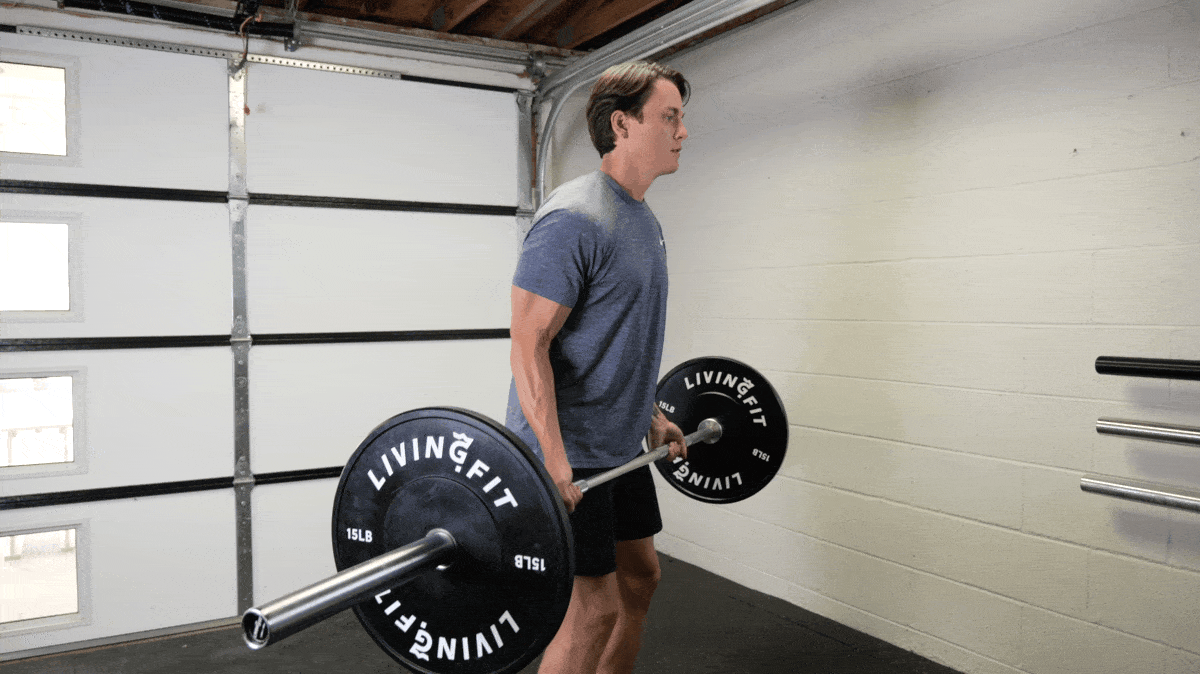
Equipment Needed: You’ll just need a barbell, weight plates, and collars. If you want, you can also perform these with a straight fixed barbell.
- Step 1 — Stand tall with your shoulder blades down your back, chest up, and shoulder pulled back. Your grip should be slightly wider than hip-width (this can vary), with your palms facing away from your body.
- Step 2 — Squeeze the bar. This will activate all of the muscles in your forearms and upper arm. You’ll also be tight and less prone to flaring your arms out or performing generally sloppy reps.
- Step 3 — Curl the bar. Instead of dragging the bar up the body, think about keeping the elbows slightly in front of the body at all times. Continue to curl up, focusing on not letting the shoulders come forward. Your shoulders will slightly — slightly! — come into play when your elbows drift forward. Remember to primarily curl with your biceps.
- Step 4 — Curl until you feel your biceps contract the most. Find that spot, hold the weight there for a beat. Actively flex your biceps throughout the entire movement, especially at the top.
- Step 5 — Control the bar on the way down. Repeat for reps.
Barbell Curl Variations
Want to accomplish pretty much the same task as the barbell curl, but with slight tweaks here and there?
Eccentric Barbell Curl
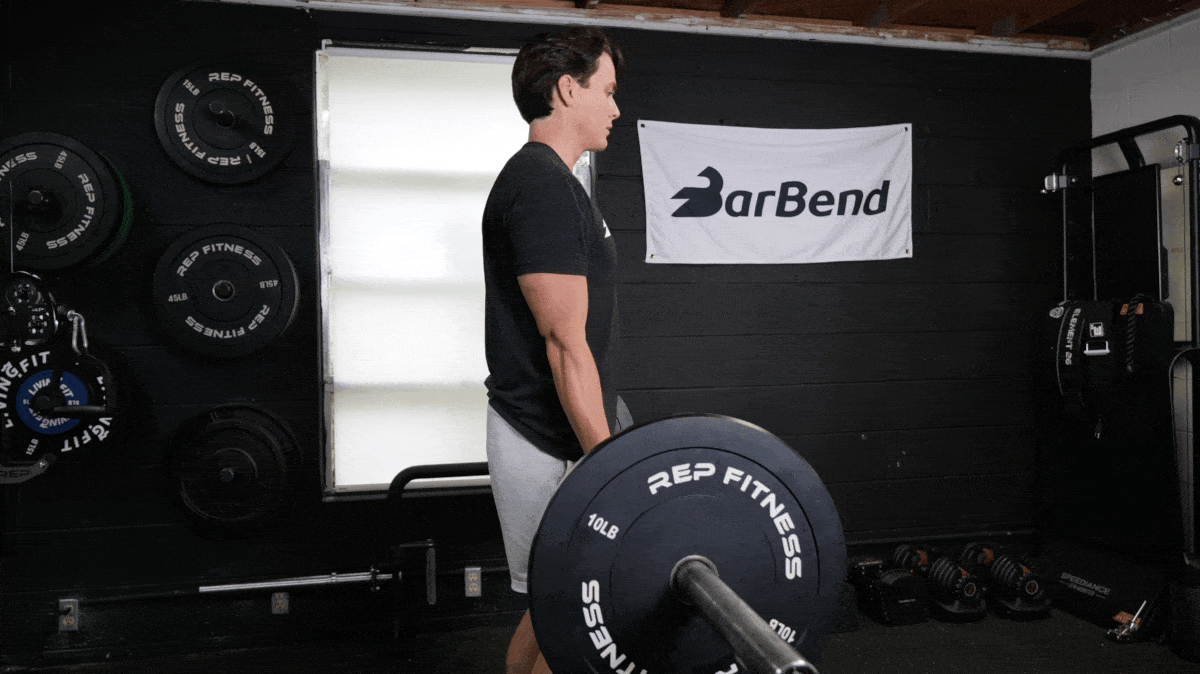
Why Do It: The eccentric curl is a way to overload the biceps and creates massive amounts of tension on the tissues. Eccentric training focuses on the lowering portion of your lifts and can help spur a tremendous amount of muscle growth.
Equipment Needed: Barbell, weight plates, collars
- Set up for a barbell curl as usual.
- Curl the weight up (you can have a partner help you if you’re using a heavier load than normal).
- Slowly lower the load under control on a tempo of three to seven full seconds on the way down.
- Repeat for reps.
Drag Curl
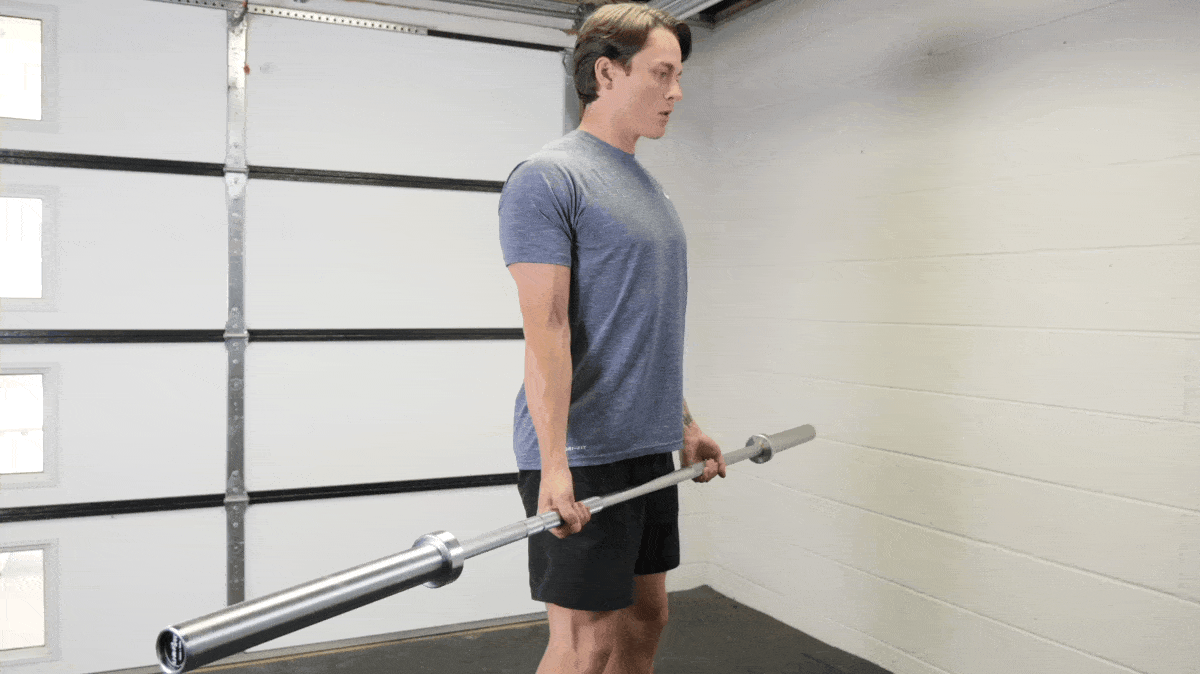
Why Do It: This variation locks your arms into place and creates an immense amount of tension on the biceps. With the drag curl, you can’t heft nearly as much weight, but you’ll certainly tax your muscles. Try using this move as a finisher toward the end of your workout.
Equipment Needed: Barbell, weight plates, barbell collars
- Grab the bar with a similar position as you would for a barbell curl. Allow your arms to come to full extension at rest while holding the bar. This might mean widening your grip slightly. Make sure your shoulder blades are back and down.
- Sit your hips back very slightly and brace your core. Prepare to maintain this very slight hip hinge and the core brace.
- Draw your arms toward you so that your upper arms are flush with or slightly behind your torso. Flex your elbows to squeeze the weight up, keeping the barbell as close to your body as possible throughout the whole range of motion.
- Lower and repeat for reps.
Seated Barbell Curl
[Read More: Try This Shoulder and Biceps Workout to Build Muscle]
Why Do It: The seated curl is a partial range of motion barbell curl, as it often omits that bottom segment of the range of motion. You can be effective at increasing the loading on the bicep as well as isolating the upper aspects of the biceps.
Equipment Needed: Barbell, weight plates, collars, weight bench
- Sit straight up on a weight bench with the barbell in your lap and your palms facing up.
- Brace your core and dig your feet into the ground.
- Perform your curl, squeezing at the top.
- Control the eccentric (lowering) portion of the weight. Repeat for reps.
Barbell Curl Alternatives
Don’t want to or can’t use a barbell for your curls? Dumbbells and a pull-up bar will serve you well.
Hammer Curl
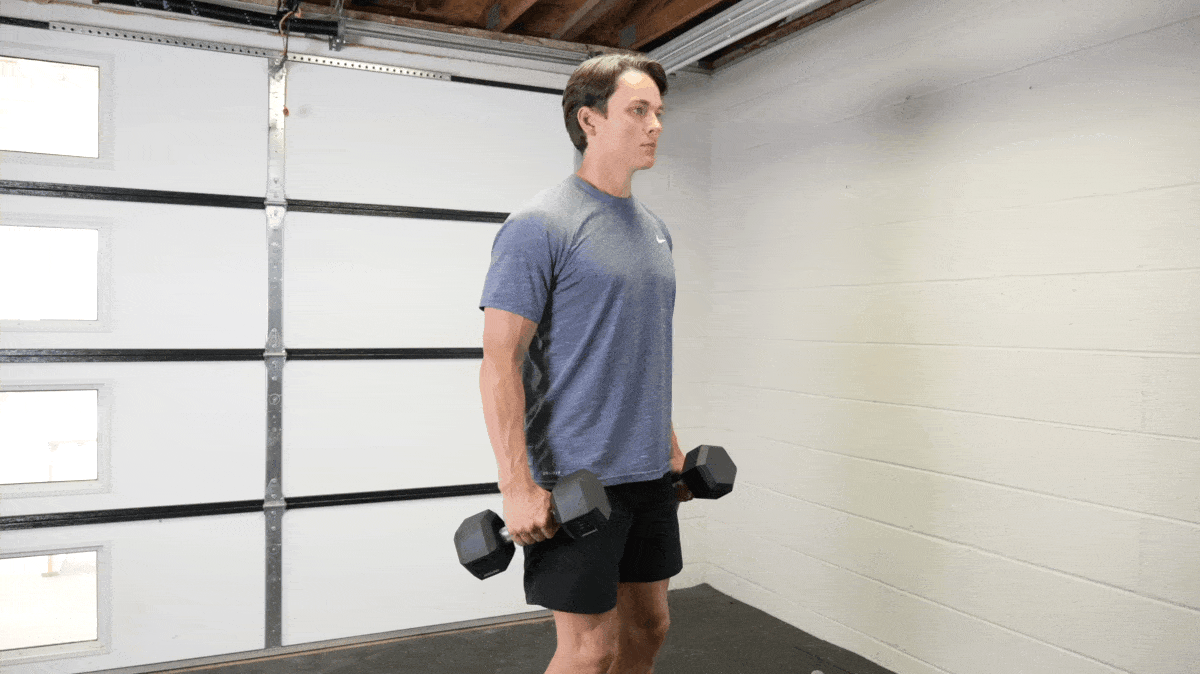
[Read More: Hammer Curls Vs. Biceps Curls — Which is Better for Building Bigger Arms?]
Why Do It: The hammer curl targets the biceps and the forearms at a slightly different angle, adding another dimension to your arm training and development. You’ll be able to keep your wrists in a neutral position, offering a slightly different training stimulus and often a lot more comfort for athletes.
Equipment Needed: Dumbbells
- Stand tall with your chest up and your shoulders back and down. Squeeze the dumbbells in your hands, at your sides.
- Keeping your palms facing each other, curl the weights up.
- Squeeze when you’re reached the top of your range of motion. Control the weights on the way down.
- Repeat for reps, keeping your wrists in that neutral position the whole time.
Preacher Curl
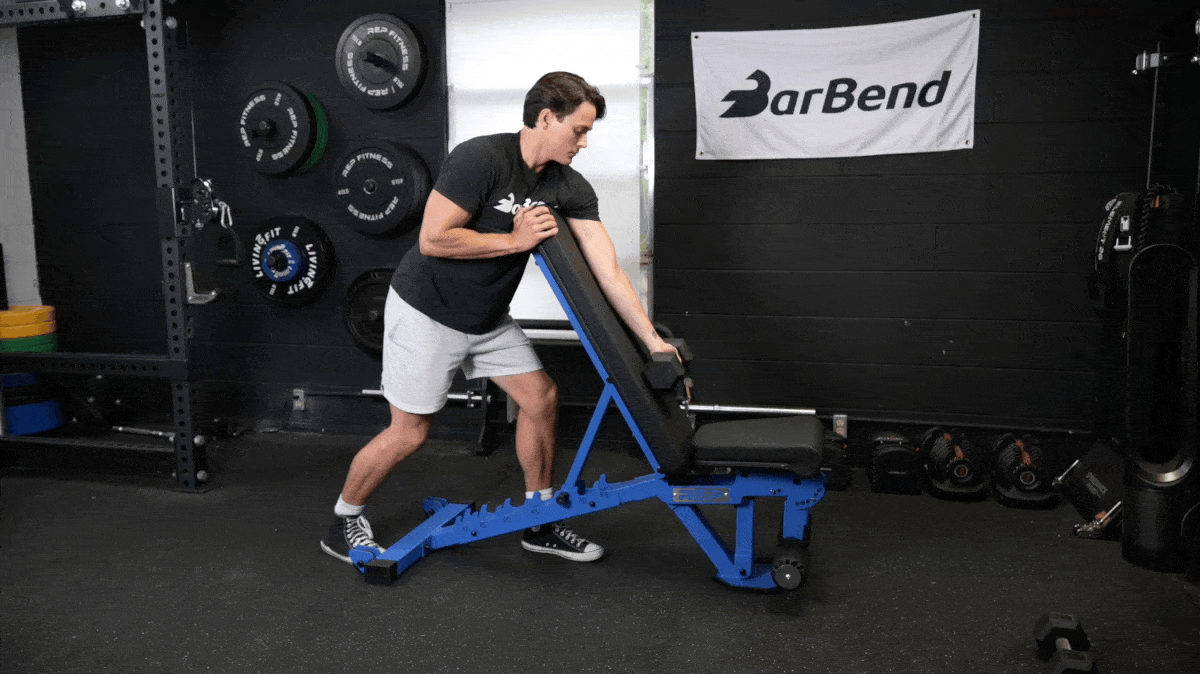
[Read More: The Best Arm Exercises to Add to Your Workout Routine]
Why Do It: The preacher curl can be done with the barbell, dumbbells, EZ bar, or machine. It’s a versatile option that has you place your arm at an angle, on a preacher curl bench or adjustable weight bench on an incline. You’ll keep your upper arm and shoulder supported on the pad to minimize movement, which helps isolate the biceps completely.
Equipment Needed: Adjustable weight bench OR preacher curl bench; dumbbell, EZ-bar, barbell, OR machine
- Holding a dumbbell, place your upper arm along an inclined weight bench or preacher curl bench. Position your torso so that you can maintain this position with strength and stability.
- Curl the weight, keeping the only movement in your biceps.
- With control, lower the weight back until your forearm is nearly touching the bench. Repeat for reps.
Chin-Up
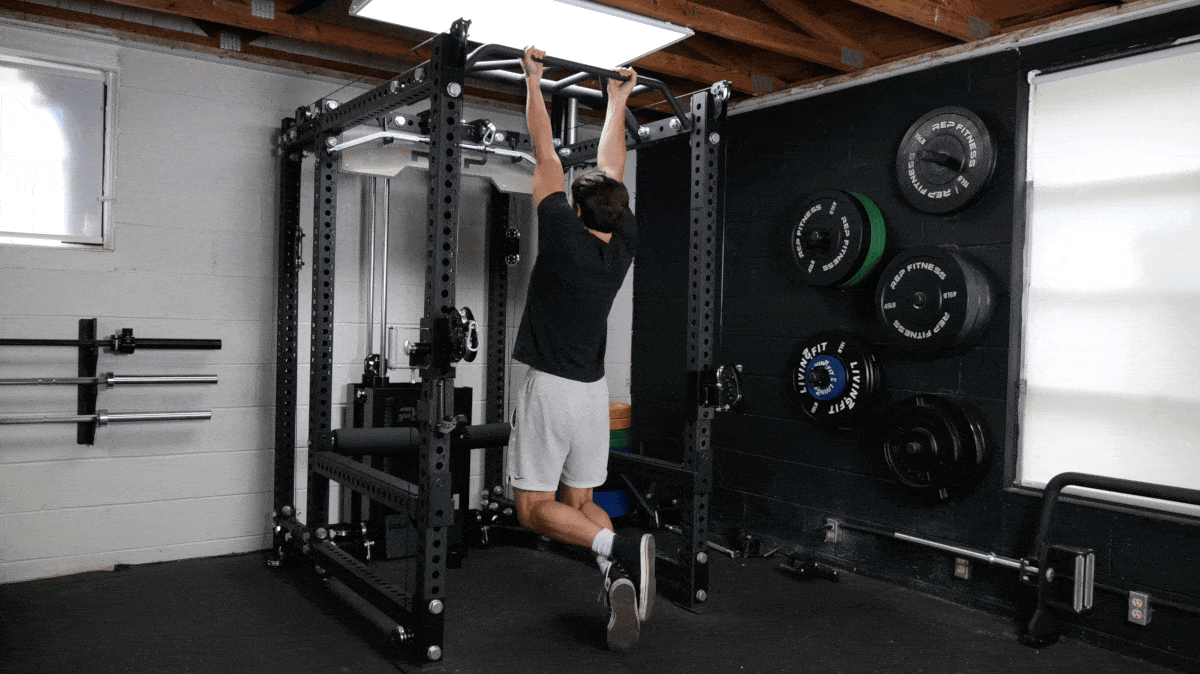
[Read More: Yes, The Chin-Up & Pull-Up Are Different. And Yes, It Matters.]
Why Do It: The chin-up is still one of the best pull exercises to build overall biceps strength and size. If you can’t do a chin-up, you can use a pull-up assist band or a pull-up assist machine to help build your strength up to your first rep.
Equipment Needed: Pull-up bar, pull-up assist band (optional)
Who Should Do the Barbell Curl
The barbell curl can help increase overall arm and grip strength and upper body mass for strength, power, and even beginners aiming for general increases in physical activity.
Strength and Power Athletes
Strength and power athletes can use the barbell curl, primarily to improve arm and grip strength, enhance eccentric loading potentials (injury prevention from strains and tears) during heavy deadlift and pulling training. Here’s more about how stronger biceps can help in specific strength sports:
- Strongman Athletes: Strong biceps can play a big role in helping protect you from injury while improving your grip strength during heavy pulls, farmer’s carries, truck pulls, and more.
- Powerlifters: Like strongman athletes, strong biceps can impact pulling strength and performance, especially helping to resist bicep strains and tears.
- Weightlifters: While weightlifters don’t want to pull with the arms during snatches and clean & jerks isn’t something we want in most lifts, stronger arms, in general, can increase pulling and grip strength. Having strong arms can also help during the pull under phase as well.
Bodybuilders
Bodybuilders strive to put on as much muscle as possible onto their frame while losing fat. In bodybuilding, every muscle is on display, so these athletes pay as much attention to their biceps as they do their back exercises or chest exercises. The barbell curl can be loaded heavier than other biceps for more overall growth, so it’s a great choice for those looking to sculpt their physique.
Beginners
Even if you don’t want or need the size of a bodybuilder or strength of a strongwoman, everyday gymgoers — including beginners in the gym— can still strive for more mass and strength. This is also a relatively simple move to learn, so it’s often among the first that newer athletes feel comfortable trying out. It can also help with general gym performance, confidence, and biceps mobility.
Barbell Curl Sets and Reps
Below are two primary training goals and programming recommendations when programming barbell curls into workout programs.
- For Strength: Do four to six sets of four to eight repetitions. Remember to start with lighter weight and perform one to two warm-up sets before increasing the weight on the bar and going for broke.
- To Build Muscle: Aim to do five to eight sets of eight to 15 repetitions. Again, perform a couple of warm-up sets until the movement feels fluid and you’re ready to crush your working sets — then aim for failure.
Benefits of the Barbell Curl
Below are four benefits of the barbell curl that strength, power, and fitness athletes can benefit from.
Improved Grip Strength
The barbell curl can be done to help improve grip and arm strength, both of which can impact pulling strength and performance. Your biceps are moving the weight, but your hands, wrists, and forearms are supporting it. All those secondary muscles will be taxed and you’ll have a crushing grip as a result.
More Potential Resilience Against Injury
The biceps are responsible for elbow flexion as well as supporting the grip muscles in pulls and loaded carries. Weak and underdeveloped biceps can cause grip issues, strain to the biceps, and in some cases muscle tears. Think of it this way, all things being equal, stronger biceps can be more resilient biceps.
Increased Upper Body Mass
If you want to fill out that shirt, the barbell curl can help you get there. Anytime you stress a muscle, it tends to respond by building itself back up to be bigger and stronger. (Assuming that your macros are dialed in and you’re eating enough.)
The barbell curl can be loaded up with relatively more weight than other curling exercises. That means you can load the muscle faster and progress the weight for longer without hitting a plateau.
They’re Accessible
Whether you own a barbell, a pair of dumbbells, or even a quality kettlebell — you can curl! You don’t need to haul a cable machine into your home gym to build a set of Larry Scott-like sleeve-huggers. You can do barbell curls in about a square foot if you really needed to. They’re simple and easy to execute.
Muscles Worked by the Barbell Curl
The barbell curl is a single-joint accessory/hypertrophy exercise that can be highly effective at targeting the arms, specifically the muscles below.
Biceps
You know this, of course, but here’s some biceps knowledge you may not be privy to. Your biceps have one function, and that’s to flex your elbow (meaning bring your lower arm towards your face). That’s exactly what this move does.
Forearms
Your biceps move the curling bar, and your forearms are what support it. The forearms aren’t a primary player in the biceps curl, but they’re crucial to holding onto all that weight and keeping it steady. As you curl heavier weights over time, you may well notice an increase in both forearm size and grip strength.
Common Barbell Curl Mistakes
While this move is pretty straightforward, that doesn’t mean it’s foolproof. Check in with your form to make sure you’re not making any of these errors.
Unintentional Body English
The last thing you want to do is curl up the bar during a biceps curl by using everything in the kitchen sink — your back, your legs, your shoulders, etc. Using your whole body to heft up the weight, especially at the beginning of a set, generally means you’re going too heavy. Slide some plates off the bar. Stand with your back against a wall or opt for preacher curls to train that stillness and focus on your biceps.
That said, you might want to use body English to get a particularly heavy bar into the top position. Then, use all the might in your biceps to resist the lowering of the weight to make the eccentric portion as slow as you can. That’s a great intentional use of added momentum.
Rushing the Eccentric
Take your time lowering the weight. It’s all too easy to blaze through barbell curls — or any isolation exercise, really — but doing so will rob you of a lot of potential gains. You’ll get a lot of muscle hypertrophy potential from lowering the bar slowly with each rep, really feeling your muscle lengthening. Spending the extra time under tension will boost your muscle-building potential.
Pulling Through Wrist Pain
Barbell curls just don’t agree with everyone’s wrists. It can help tremendously to dynamic warm-up with wrist rolls and waves before barbell curls to help prevent any issues — but sometimes, the palms-up position on a bar just isn’t where it’s at for your strength and mobility level.
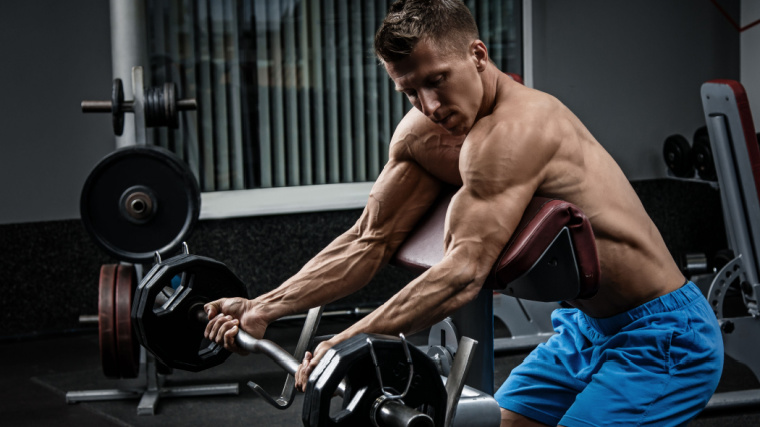
[Read More: Unique Biceps Exercises to Use for Mass and Strength]
Instead of pushing through it, try dumbbell curls, hammer curls, or even EZ-bar curls. This way, you can build your biceps with less pressure on your wrists.
Curl it Up
Adding the barbell curl to your biceps workouts is a solid way to improve your upper arm strength. It’s the first exercise many people try out with a barbell for a reason — it’s fairly intuitive, and many people coming into the gym are after those isolation exercises that are easy to pick up and go.
But don’t sleep on these as an advanced athlete. Developing those biceps can have a lot of carryover potential into supporting your back through big pulls like the bent-over row. Plus, these will help you fill out that T-shirt pretty darn well.
Frequently Asked Questions
It’s a simple move, but you want to do it right — and at the right times. Here’s what you’ve got to pay attention to with this move.
What does a barbell curl work?
You’ll be training your biceps with barbell curls. Yes, your forearms are involved in gripping and stabilizing the weight, as are your shoulders to a small degree. But the main idea here is to have all the principle movement and force coming from your biceps.
How much should I barbell curl?
Since everyone’s strength and skill levels are vastly different, there’s no number to provide. But as a general guideline, many people can barbell curl more than they would be able to curl with dumbbells because both arms are stabilizing and lifting the weight together. Start with roughly the same weight that you can curl with dumbbells.
So, if you curl 20 pounds in each hand, start your barbell curls with an empty 45-pound barbell. If you can easily knock out 12 to 15 reps, add five pounds. Gradually increase the weight from there.
When should I do barbell curls in my routine?
It depends. If you train arms on their own separate day, then do them early on in your workout. You can generally lift the most weight with your biceps on barbell curls, and you’ll be stronger at the start of your training session.
If you train biceps with another muscle group — like your chest or back — then you should save it for later in your workout. That said, still lead your biceps training off with this, just after chest or back workout.
Can I do just barbell curls for my biceps?
Technically yes, but we don’t typically suggest that. There’s an advantage to using dumbbells, resistance bands, and cables to give your biceps different challenges. Also, changing your hand position and arm angles are ways to keep your training fresh while changing the emphasis of an exercise.
Curls are simple, so I can skip my warm-up, right?
No! Your biceps are a small muscle and just as injury prone as other, larger muscles. Before curling — especially if you plan to lift heavy — be sure to curl light weight for a few sets. Do two to three warm-up sets and add a little weight to each set. After you’ve done those, you can begin your working sets.
More Biceps Training Tips
- The Best Bodybuilding Arm Workout, Customized to Your Experience Level
- Try This Biceps Workout With Dumbbells for Superior Muscle Growth
- The Best Barbell Biceps Exercises to Boost Your Arm Size and Pulling Strength